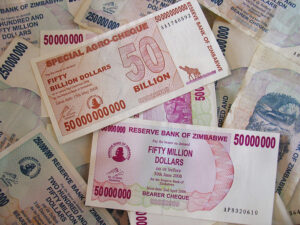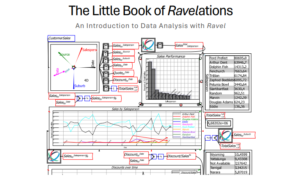This is part of our series critiquing the book “What Has Government Done to Our Money?“. This post discusses the federal government taking gold from people in 1933, the authors view causes of hyperinflation, the problems with fiat currencies, from his perspective, and the US money supply from 1815 to 1914..
The “Rothbard” mentioned below is Murry Rothbard, the author of the book in question.
Page 49
Rothbard writes “It became clear to governments that they could not afford to allow people to own and keep their gold. Government could never cement its power over a nation’s currency, if the people, when in need, could repudiate the fiat paper and turn to gold for their money”.
The Gold Reserve Act of 1933 outlawed most private possession of gold as stated.
The book was published in 1962. In 1974, President Gerald Ford signed a bill legalizing private ownership of gold coins, bars, and certificates. The US went off the gold standard in 1971, but nothing prevented people from resuming to use gold for transactions subsequent to 1974.
The ideas in the book predicts that should happen, as per the author, gold is infinitely superior to fiat currency as a form of money.
It didn’t happen.
Page 49, further down
Rothbard writes “Hyper-inflation occurs when the public realizes that the government is being on inflation, and decides to evade the inflationary tax on its resources by spending money as fast as possible while it still retains some value”.
I’m not sure how many people believed that to be true in 1962, but today we know that is NOT what causes hyperinflation. If it was, we would have experienced hyperinflation many times over in past decades.
It is now understood that hyperinflation occurs when supply of critical stuff collapses.
Page 50
Rothbard writes in relation to different countries using different fiat currencies “In a world of fiat moneys, each country has its own money. The international division of labor, based on an international currency, has been broken, and countries tend to divide into their own autarchic units. Lack of monetary certainty disrupts trade further. The standard of living in each country thereby declines”.
Since the US went off the gold standard, foreign trade has increased drastically. Living standards in the US are now falling, but it’s easy to see the cause is not lack of trade, but rather the increasingly unequal distribution of the fruits of our national productivity.
Page 53
When writing about the American economy from 1815 – 1914, Rothbard writes “One of the reasons for the growth and prosperity of the United States has been the fact that we have enjoyed one money throughout the large area of the country”.
This is flat out not true.
While it IS true that the US was nomically on a gold standard, regional banks issued gold certificates in excess of the gold reserves they had.
What is known as “fractional reserve banking”, which itself was created without government intervention, started as a result of BANKS seeing advantages, in the 12th century.
The various regional banks in the US defined their own reserve requirements, which were generally known, but not regulated. As a result, a defined sum of money from bank X and the same defined sum of money from bank Y would NOT buy the same “basket of goods”.
It can not truthfully be said “the United States enjoyed one money throughout the large area of the country” prior to 1863.
As that is when the US National Bank was established.
Prior to 1863, there could not have been a uniform US dollar, because Congress had not legislated it’s creation.



